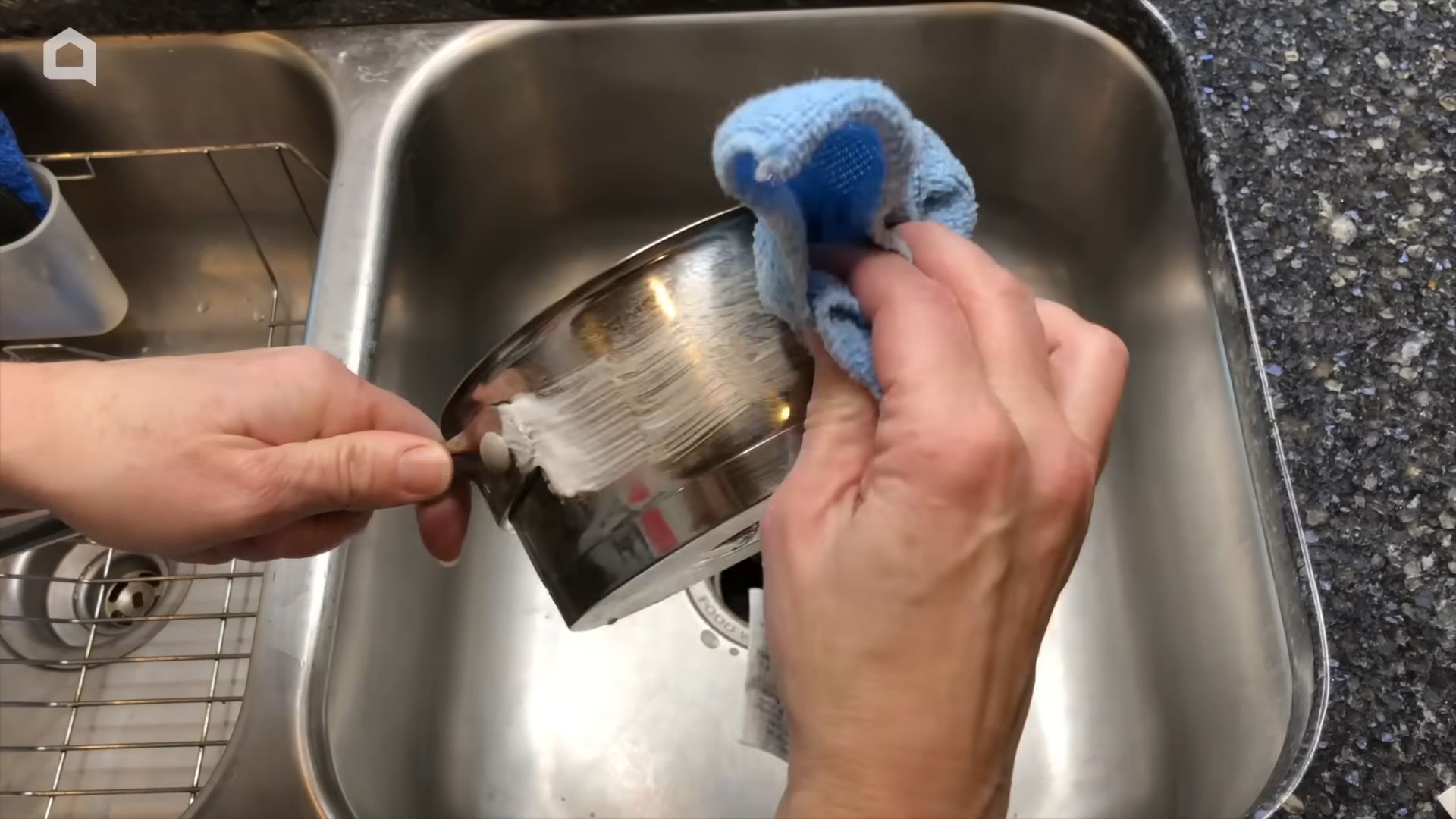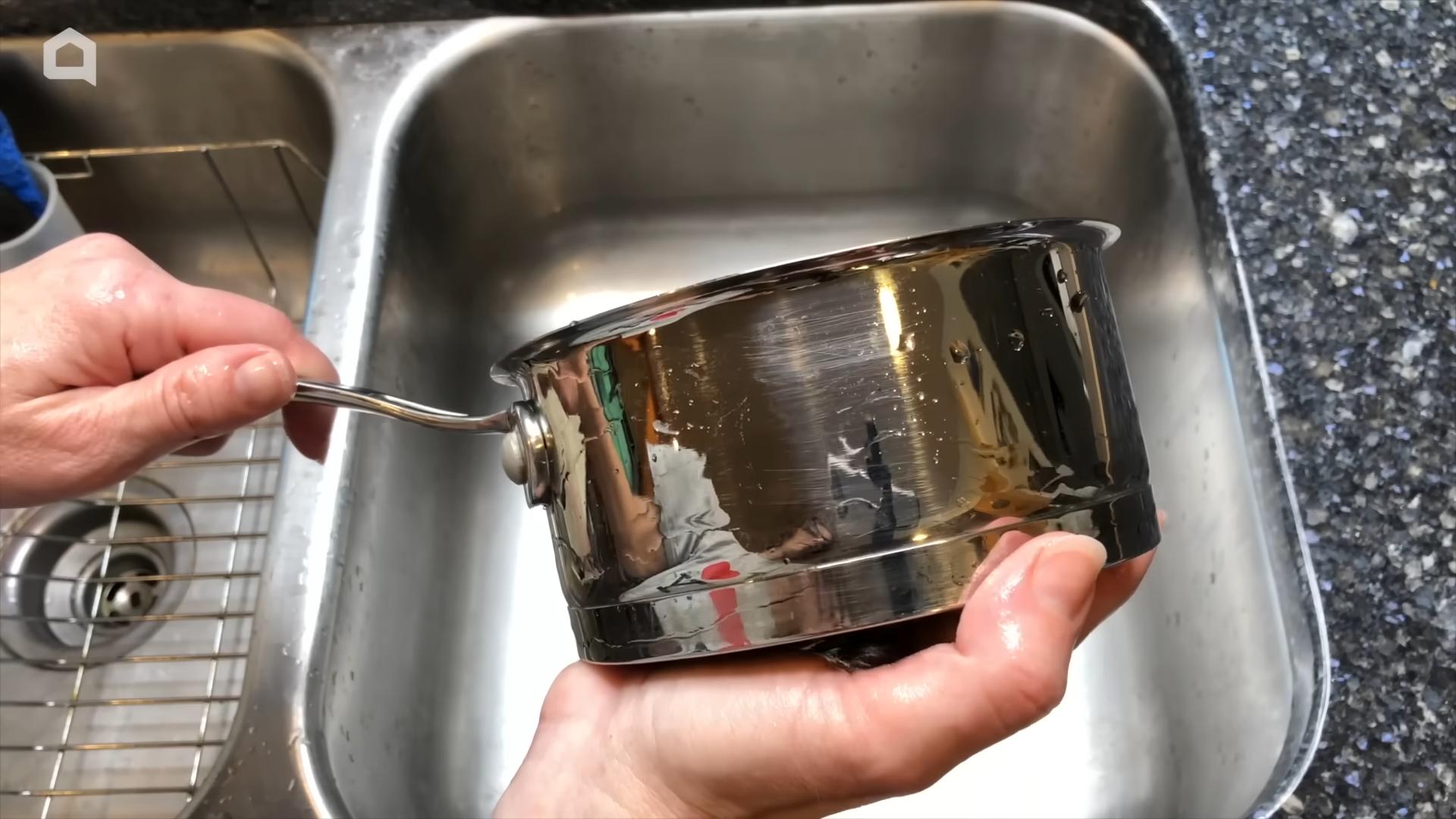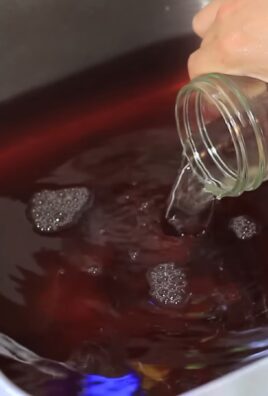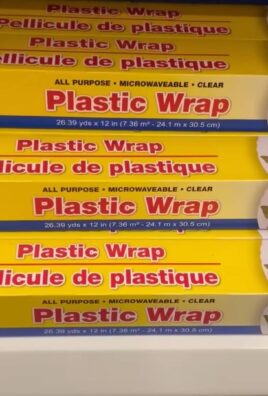Baking Soda Clever Fixes: Unlocking the Magic in Your Home! Have you ever looked at that box of baking soda in your pantry and thought, “There has to be more to this than just baking cookies?” Well, you’re absolutely right! For generations, baking soda, also known as sodium bicarbonate, has been a staple in homes worldwide, not just for its culinary uses, but also for its incredible cleaning and deodorizing properties. From ancient Egyptians using it in cleaning rituals to our grandmothers relying on it for household hacks, baking soda’s versatility is undeniable.
But in today’s world, where we’re all looking for eco-friendly and budget-conscious solutions, baking soda clever fixes are more relevant than ever. Why spend a fortune on harsh chemicals when you can achieve sparkling results with a simple, natural ingredient? I’m excited to share some amazing DIY tricks that will transform the way you clean, freshen, and even care for your personal well-being, all with the power of baking soda. Get ready to discover the magic hidden in that little box – you’ll be amazed at what it can do!

Unlocking the Magic of Baking Soda: Clever DIY Fixes Around Your Home
Hey there, fellow DIY enthusiasts! Baking soda, or sodium bicarbonate, is truly a wonder ingredient. It’s not just for baking; it’s a powerhouse for cleaning, deodorizing, and even tackling some surprising household problems. I’m going to share some of my favorite DIY hacks using this humble white powder. Get ready to be amazed by its versatility!
Deodorizing and Freshening
Baking soda is a natural deodorizer, absorbing odors instead of just masking them. This makes it perfect for tackling those lingering smells around your home.
* Refrigerator Deodorizer: The classic solution!
* Carpet Freshener: A quick and easy way to revive your carpets.
* Shoe Deodorizer: Banish those smelly shoe odors.
* Garbage Disposal Freshener: Keep your garbage disposal smelling clean.
Step-by-Step Instructions:
1. Refrigerator Deodorizer: Simply place an open box of baking soda in your refrigerator. I usually use a small, shallow container to maximize the surface area exposed to the air. Replace it every month or two, or sooner if you notice odors returning. You can also sprinkle some baking soda on a damp sponge and wipe down the interior of your fridge for extra cleaning power.
2. Carpet Freshener: Sprinkle a generous amount of baking soda evenly over your carpet. Let it sit for at least 15-30 minutes, or even overnight for stubborn odors. Then, vacuum thoroughly. I sometimes add a few drops of essential oil (like lavender or lemon) to the baking soda before sprinkling it on the carpet for a pleasant scent. Just make sure to test it in an inconspicuous area first to ensure it doesn’t stain.
3. Shoe Deodorizer: There are a couple of ways to tackle shoe odors. You can sprinkle baking soda directly into your shoes and let it sit overnight, then shake it out in the morning. Alternatively, you can fill old socks with baking soda, tie them off, and place one in each shoe overnight. This is a less messy option.
4. Garbage Disposal Freshener: Pour about 1/2 cup of baking soda down your garbage disposal, followed by 1 cup of white vinegar. Let it fizz for about 5-10 minutes, then flush with hot water for several minutes. This helps to break down grease and food particles that can cause odors. I do this about once a week to keep my disposal smelling fresh.
Cleaning Powerhouse
Baking soda’s mild abrasive properties make it an excellent cleaner for various surfaces. It’s gentle enough to avoid scratching but effective at removing grime and stains.
* Oven Cleaner: A natural alternative to harsh chemical oven cleaners.
* Grout Cleaner: Brighten up your tile grout.
* Sink and Tub Cleaner: A gentle yet effective cleaner for your bathroom fixtures.
* Burnt Food Remover: Loosen stubborn burnt food from pots and pans.
Step-by-Step Instructions:
1. Oven Cleaner: Make a paste of baking soda and water (about 1/2 cup baking soda to 3 tablespoons water). Spread the paste all over the inside of your oven, avoiding the heating elements. Let it sit overnight. The next day, wipe out the paste with a damp sponge. For stubborn areas, you can use a plastic scraper. I usually follow up with a spray bottle filled with white vinegar to react with any remaining baking soda, making it easier to wipe clean.
2. Grout Cleaner: Make a paste of baking soda and water (similar to the oven cleaner paste). Apply the paste to the grout lines and let it sit for about 10-15 minutes. Then, scrub with an old toothbrush or grout brush. Rinse with water. For tougher stains, you can mix baking soda with hydrogen peroxide instead of water.
3. Sink and Tub Cleaner: Sprinkle baking soda directly onto a damp sponge or cloth. Scrub the sink or tub, then rinse with water. For extra cleaning power, you can add a few drops of dish soap to the baking soda. I love using this method because it’s so gentle and doesn’t leave behind any harsh chemical smells.
4. Burnt Food Remover: Sprinkle a generous amount of baking soda into the pot or pan with the burnt food. Add enough water to cover the burnt area. Bring the mixture to a boil and let it simmer for about 10-15 minutes. Then, let it cool. The burnt food should loosen and be easier to scrub away. For really stubborn burnt food, you can let the baking soda and water mixture soak overnight.
Beyond Cleaning: Unexpected Uses
Baking soda’s versatility extends beyond just cleaning and deodorizing. Here are some more surprising ways you can use it around your home.
* Soothing Bug Bites and Sunburns: Relieve itching and discomfort.
* DIY Toothpaste: A simple and natural alternative to commercial toothpaste.
* Laundry Booster: Enhance the cleaning power of your laundry detergent.
* Unclogging Drains: A natural alternative to chemical drain cleaners.
Step-by-Step Instructions:
1. Soothing Bug Bites and Sunburns: Make a paste of baking soda and water (about 1 tablespoon baking soda to 1 teaspoon water). Apply the paste to the bug bite or sunburned area. Let it sit for about 10-15 minutes, then rinse with water. This helps to neutralize the itch and reduce inflammation. You can also add baking soda to a cool bath to soothe sunburned skin.
2. DIY Toothpaste: Mix baking soda with a small amount of water to form a paste. You can also add a drop of peppermint essential oil for flavor. Use this paste to brush your teeth as you would with regular toothpaste. Be aware that baking soda is abrasive, so don’t use it too frequently, as it can wear down enamel over time. I use it maybe once or twice a week as a whitening boost.
3. Laundry Booster: Add 1/2 cup of baking soda to your washing machine along with your regular laundry detergent. This helps to boost the cleaning power of your detergent and remove odors. It’s especially helpful for washing towels and workout clothes.
4. Unclogging Drains: Pour 1 cup of baking soda down the drain, followed by 1 cup of white vinegar. Let it fizz for about 30 minutes, then flush with hot water. This can help to break down clogs caused by grease and hair. For stubborn clogs, you may need to repeat the process. If this doesn’t work, you might need to resort to a plunger or call a plumber.
Important Considerations
While baking soda is generally safe, it’s important to keep a few things in mind:
* Abrasiveness: Baking soda is mildly abrasive, so avoid using it on delicate surfaces that can scratch easily.
* Allergies: Although rare, some people may be allergic to baking soda. If you experience any irritation, discontinue use.
* Ingestion: While baking soda is generally safe to ingest in small amounts, consuming large quantities can cause stomach upset.
* Mixing with Acids: When mixing baking soda with acids like vinegar, be prepared for a fizzing reaction. This reaction can be helpful for cleaning, but it can also create pressure in closed containers.
I hope these DIY hacks inspire you to explore the many uses of baking soda around your home. It’s an affordable, versatile, and eco-friendly ingredient that can make your life a little easier and your home a little cleaner. Happy DIY-ing!

Conclusion
So, there you have it! Unlocking the incredible potential of baking soda goes far beyond just baking. This simple, inexpensive ingredient is a powerhouse of cleaning, deodorizing, and even beauty applications. We’ve explored just a few of the clever fixes baking soda offers, from revitalizing your carpets to creating a soothing bath soak. But the real magic lies in its versatility and adaptability to your specific needs.
Why is this DIY approach a must-try? Because it’s effective, eco-friendly, and budget-conscious. Commercial cleaning products often contain harsh chemicals that can be harmful to your health and the environment. Baking soda, on the other hand, is a natural and gentle alternative that gets the job done without the added risks. Plus, think of the money you’ll save by ditching those expensive store-bought solutions!
Ready to take your baking soda game to the next level? Here are a few suggestions and variations to inspire you:
* **Scented Carpet Refresher:** Add a few drops of your favorite essential oil (lavender, lemon, or eucalyptus work well) to the baking soda before sprinkling it on your carpet. This will leave your home smelling fresh and clean.
* **DIY Toothpaste Booster:** Mix a pinch of baking soda with your regular toothpaste for an extra whitening boost. Be careful not to overdo it, as excessive use can erode enamel.
* **Oven Cleaner Power-Up:** For stubborn oven grime, create a paste of baking soda and water, apply it to the affected areas, and let it sit overnight. The next day, simply wipe away the grime with a damp cloth.
* **Natural Deodorant Enhancement:** For those transitioning to natural deodorants, a light dusting of baking soda under the arms can help absorb moisture and neutralize odor.
We’ve only scratched the surface of what baking soda can do. The possibilities are truly endless! The key is to experiment and find what works best for you and your home.
We wholeheartedly encourage you to try these clever fixes using baking soda. Embrace the simplicity and effectiveness of this natural wonder. Once you experience the results firsthand, you’ll be amazed at how much you can accomplish with just a box of baking soda.
Don’t just take our word for it – give it a try! And most importantly, we want to hear about your experiences. Share your baking soda success stories, tips, and variations in the comments below. Let’s create a community of baking soda enthusiasts and unlock even more of its hidden potential together! Your insights could inspire others to discover the amazing benefits of this simple yet powerful ingredient. Let us know what clever fixes you’ve discovered!
Frequently Asked Questions (FAQ)
Is baking soda safe to use on all surfaces?
While baking soda is generally safe and gentle, it’s always a good idea to test it on an inconspicuous area first, especially on delicate surfaces like polished wood or certain types of fabric. Baking soda is mildly abrasive, so excessive scrubbing on sensitive materials could potentially cause scratches or damage. Avoid using baking soda on aluminum, as it can cause discoloration. For surfaces you’re unsure about, consult the manufacturer’s recommendations or a professional cleaner.
How often can I use baking soda for cleaning?
The frequency of using baking soda for cleaning depends on the specific application and the surface being cleaned. For general cleaning tasks like wiping down countertops or scrubbing sinks, you can use baking soda as needed. However, for more abrasive applications like cleaning ovens or removing stubborn stains, it’s best to limit the frequency to avoid damaging the surface. As a general rule, start with a small amount of baking soda and gradually increase as needed, always testing on an inconspicuous area first.
Can I mix baking soda with other cleaning products?
While baking soda is a versatile cleaning agent on its own, it’s important to exercise caution when mixing it with other cleaning products. Mixing baking soda with acidic substances like vinegar can create a fizzing reaction that releases carbon dioxide gas. While this reaction can be useful for certain cleaning tasks, it’s important to do it in a well-ventilated area and avoid mixing large quantities, as the pressure buildup could cause a container to burst. Avoid mixing baking soda with bleach, as this can create harmful chlorine gas. In general, it’s best to use baking soda on its own or with water, and to avoid mixing it with other cleaning products unless you’re absolutely sure it’s safe to do so.
How should I store baking soda?
To maintain its effectiveness, baking soda should be stored in a cool, dry place in an airtight container. Exposure to moisture and air can cause baking soda to clump and lose its potency. A resealable plastic bag or an airtight container works well for storing baking soda. Avoid storing baking soda near strong odors, as it can absorb them. With proper storage, baking soda can last for several years.
Is there a difference between baking soda and baking powder?
Yes, baking soda and baking powder are different substances with different chemical compositions and uses. Baking soda (sodium bicarbonate) is a single ingredient that requires an acidic ingredient (like vinegar or lemon juice) to activate its leavening properties. Baking powder, on the other hand, is a complete leavening agent that contains both an acid and a base, so it doesn’t require an additional acidic ingredient. While both baking soda and baking powder can be used in baking, they are not interchangeable. Using the wrong one can result in a flat or poorly risen baked good. For cleaning purposes, baking soda is generally the preferred choice due to its mild abrasive properties and deodorizing capabilities.
Can baking soda help with skin problems?
Baking soda has been used as a home remedy for various skin problems, but it’s important to use it with caution. While baking soda can help exfoliate the skin and neutralize odors, it can also be irritating to some people, especially those with sensitive skin. Baking soda has a high pH level, which can disrupt the skin’s natural pH balance and lead to dryness, irritation, and even eczema flare-ups. If you’re considering using baking soda on your skin, it’s best to do a patch test first to see how your skin reacts. Avoid using baking soda on broken or irritated skin. If you experience any adverse reactions, discontinue use immediately. For more serious skin problems, it’s always best to consult a dermatologist.
How can I use baking soda to deodorize my refrigerator?
Baking soda is an excellent natural deodorizer for refrigerators. To use it, simply place an open box of baking soda in the refrigerator. The baking soda will absorb odors and keep your refrigerator smelling fresh. Replace the box of baking soda every month or two, or more frequently if you notice any lingering odors. You can also sprinkle baking soda on a damp sponge and wipe down the interior surfaces of the refrigerator to remove spills and odors.
What are some other uses for baking soda that weren’t mentioned in the article?
The uses for baking soda are truly vast! Here are a few more ideas:
* **Soothe insect bites and stings:** Make a paste of baking soda and water and apply it to the affected area to relieve itching and inflammation.
* **Clean your dishwasher:** Sprinkle baking soda in the bottom of your dishwasher before running a cycle to help remove food particles and odors.
* **Freshen your shoes:** Sprinkle baking soda inside your shoes to absorb moisture and eliminate odors.
* **Clean your coffee maker:** Run a cycle with a solution of baking soda and water to remove mineral buildup and improve the taste of your coffee.
* **Polish silverware:** Make a paste of baking soda and water and use it to polish silverware and remove tarnish.
Remember to always research and use caution when trying new applications of baking soda. The possibilities are endless, so get creative and discover even more ways to harness the power of this amazing ingredient!





Leave a Comment